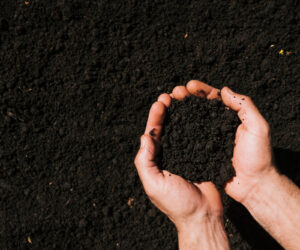Layering for Impact: Creating Depth and Dimension in Small Garden Spaces
Do you live in an urban space and want to maximise the charm of your home garden? Crafting depth and dimension is essential for transforming small garden spaces into visually captivating indoor sanctuaries. From colour theory to layering for impact, here are a few concepts that will bring outstanding results for your microgarden.
Understanding Layering
Layering is a fundamental principle of garden design that involves arranging plants in multiple tiers or levels to create a sense of depth and perspective. By strategically placing plants of varying heights, textures, and colours, you can add visual interest and dimension to your garden, making it feel larger and more dynamic than it actually is.
Vertical Layering:
Vertical layering is about utilising the vertical space in your garden to its fullest potential. Consider incorporating trellises, arbours, or vertical planters to add height and structure. Climbing plants like ivy, clematis, and jasmine can be trained to grow upwards, softening hard surfaces and adding a vertical element to your garden design.
- Install trellises or arches along walls or fences to create vertical appeal.
- Choose fast-growing climbers for quick coverage and impact.
- Hanging planters or wall-mounted pots can be incorporated to utilise vertical space efficiently.
Mid-Level Plantings:
Mid-level plantings serve as the backbone of your garden, filling the space between ground-level plantings and taller plants. Choose medium-sized shrubs, ornamental grasses, or perennial flowers to create a lush and textured backdrop for your garden.
- Group plants of similar heights together to create cohesive plantings.
- Use layering techniques to create depth within mid-level plantings, with taller plants towards the back and shorter ones towards the front.
- Consider mid-level plants’ foliage colour, texture, and bloom time to ensure a visually appealing composition throughout the seasons.
Ground-Level Plantings:
Ground-level plantings form the foundation of your garden, covering the soil and providing a base for taller plants to shine. Choose low-growing ground covers, such as creeping thyme, sedum, or moss, to carpet the ground and suppress weeds.
- Incorporate ground covers with different textures and foliage colours to add interest.
- Use ground-level plantings to create borders or define planting zones within your garden.
- Mix ground covers with flowering perennials or bulbs for seasonal interest and colour.
Creating Visual Pathways:
Integrate pathways or stepping stones into your garden design to guide the viewer’s gaze and create a sense of movement through the space. Use materials like gravel, stone, or wood to define pathways and borders, adding structure and organisation to your garden layout.
- Design pathways to lead visitors through different garden areas, highlighting key features and focal points.
- Plant along the edges of pathways to soften hard lines and create a seamless transition between different layers.
- Consider incorporating curves or meandering paths to add visual variation within your garden.
Utilising Containers and Raised Beds:
Containers and raised beds are excellent tools for adding additional layers and dimensions to your garden. Elevating plants off the ground allows you to create distinct planting zones and showcase them individually.
- Experiment with different gardening accessories and do-it-yourself (DIY) containers to add variety to your garden.
- Use raised beds to create vertical layers within your garden, with taller plants towards the centre and shorter plants towards the edges.
- Incorporate organic hanging basket liners and coir plant pots into your garden layout to add an aesthetic touch to the design.
Playing with Texture and Color:
Texture and colour are crucial in creating depth and dimension in your garden. Mix plants with contrasting textures, such as smooth leaves against rough bark or spiky foliage next to feathery fronds, to create visual interest and variation.
- Experiment with colour combinations that pop, using bold hues to draw the eye and create focal points within your garden.
- Learn how to create colour schemes that evoke different moods and atmospheres in your micro garden, from vibrant and energetic to serene and calming.
- When planning your garden, consider the seasonal variation in plant colours and textures, selecting plants that offer visual interest throughout the year.
Layering for Seasonal Interest:
Plan your garden to provide year-round appeal by incorporating plants with varying seasonal characteristics. Choose a mix of evergreen shrubs, flowering perennials, and seasonal bulbs to ensure your garden looks vibrant and alive throughout the year.
- Plant spring bulbs under deciduous trees or shrubs to add early-season colour before the leaves emerge.
- Incorporate fall-blooming perennials or ornamental grasses to add colour and texture to your garden in autumn.
- Choose plants with interesting foliage or bark to provide visual interest during winter.
Layering for impact is a powerful technique for creating depth and dimension in small garden spaces. Experiment with texture, colour, and seasonal interest to create a personalised garden design that reflects your unique style and personality. With creativity and thoughtful planning, you can turn even the smallest of spaces into a lush and inviting outdoor retreat.
TIPS FROM OUR ONLINE ADVICE LIBRARY
Do you want to get more expert tips on gardening? Here are a few that can interest you:
- Growing Your Own Indoors
- How To Start A Vegetable Patch
- What Is The Best Compost For Starting Seeds?
SHARE YOUR SUSTAINABLE GREENHOUSE!
If you follow our greenhouse advice, you can enjoy fresh, homegrown veggies all year long, protect precious tender plants over winter, and give yourself a head start in the spring!
If you’ve set up a greenhouse for sustainable year-round gardening, congratulations! Do post your pictures and tag @cocoandcoir on Instagram. We’ll credit you for any images we use and you’ll be in with a chance to win some Coco&Coir goodies.











